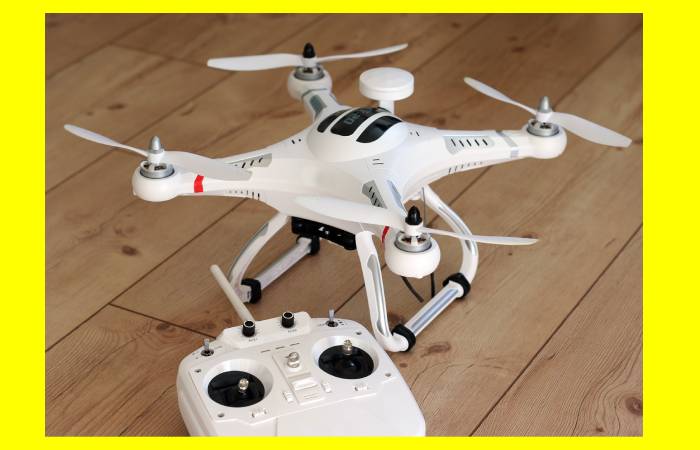Drones in construction- uses and benefits of drones in construction, since the use of technology in the industry is increasingly recurrent by allowing cost savings. Know the technological tools that exist and their functions. They are capable of reducing costs and execution times and obtaining more precise information. Among some of the most practical and functional processes. You can take photographs and videos, thermographies, carry out inspections, do photogrammetry. And follow up on the progress of the work. Perhaps the recreational use of drones is the best-known part of these remotely pilots aeronautical systems or RPAS (remotely piloted aircraft systems). Still, technological development has allows them to improve. And find new applications for various sectors, including military and industrial.
How Many Types of Drones?
There is no doubt that drones are one of the most disruptive technologies today. In recent years the drone sector has experiences exponential growth, and an excellent . The example of this is a large number of aircraft that have come onto the market in such a short time.
Types of drones
Fixed Wing And Rotary Wing
There are different types of RPA classifications, but we will focus exclusively on the types of drones bases on their type of support. Thus, we have fixed-wing drones and rotary-wing drones.
Fixed Wing Drones
Fixed-wing drones are aircraft with a wing profile that allows the aircraft to move through the air and can generate lift forces to stay airborne. This type of drone has an aesthetic very similar to radio control airplanes.
The main characteristic of this type of drone is the significant autonomy they offer us. Since they can be flown for several hours thanks to their aerodynamic efficiency. Furthermore, fixed-wing drones are ideal for mapping large areas of terrain since large areas of land are covering with a single battery. For this reason, drones are widely use in precision agriculture and photogrammetry work.
Unlike rotary-wing drones, hovering is not possible with this type of drone. Therefore, we will not be able to carry out work that requires. The drone to be flying will fix at a certain height, such as inspection work.
Rotary Wing Drones
Rotary wing drones, or multirotor, are the most widespread and most using types of drones by professionals in the sector. Although there are other types of rotary-wing drones. We will only analyze multirotors because they are the most common drones on the market. The main difference between multirotor and fixed-wing drones lies in their ability to stay in the air. While fixed-wing drones achieve lift through their airfoil, multirotor generate lift through the forces generated by their rotor blades.
Depending on the number of rotors that the drone mounts, there are: tricopters (3 motors), quadcopters (4 motors), hexacopters (6 motors), and octocopters (8 engines).
What Are The Flexibility Of Drones?
Drones can be equipped with high-resolution cameras, atmospheric sensors, and thermal gauges and achieve panoramic shots, measure distances with greater accuracy, and penetrate spaces that would be difficult to reach by land. This way, you can evaluate some values, reduce the time to hours or minutes, monitor the work, and prevent possible errors.
The device or devices can inspect works, check buildings or even skyscrapers both outside and inside, look for water leaks, or take measurements at very high altitudes. These are tasks that involve a lot of risk and danger for people, which is saves through the correct handling of the drone from the comfort of the ground.
How Important To Be a Professional Drone Pilot?

To work professionally with drones, the norm dictates that “you can fly up to 120 meters high, you cannot go more than 8 kilometers away, and you cannot fly within a radius of 8 kilometers from airports or heliports. In addition, a pilot’s license is not requiree if commercial drones under two kilos are to use.
Another use in which it is possible to save money and obtain results is land routes since sustainable mobility will be need. You can count vehicles or peak hours, mainly. With drones and artificial intelligence, everything can be obtaining almost in real-time. With a significant reduction in time, results are obtained. Thus, better routes or alternatives can be drawn for projects, extensions, or suppression of direction changes, overpasses, and underpasses, among others.
Multirotors are capable of vertical takeoff and landing. The start-up of this type of drone is much faster than fixed-wing drones since they can take off and land practically from anywhere as they do not need a suitable ground surface for it.
What Are The Drawback Of Drones?
The main drawback of this type of drone is its autonomy. Multirotors have a high energy consumption because all their rotors must be in operation for the aircraft to remain in the air. In most cases, they will offer us about 20 minutes of flight. Therefore, if large extensions need to be mapped, it is inevitable to have several sets of batteries with the extra cost in time and money that this entails. As we can see, there are different kinds of drones. And both fixed-wing and rotary-wing drones have their advantages and disadvantages.
The main characteristic of multirotor is their versatility. You can install different types of cameras (RGB, multispectral, thermographic cameras…) . That allow us to carry out various jobs. In addition, with this type of drone, we will be able to carry out stationary flights, enabling us to carry out specific tasks. That would be impossible with a fixed-wing drone, such as inspection work.
Conclusion
The photographic shots taken from drones also reduce time, money, and effort since the files are saves in digital format and transmit immediately. With these data, physical or virtual 3D models are built, depending on the BIM (Building Information Models) methodology will be use.


